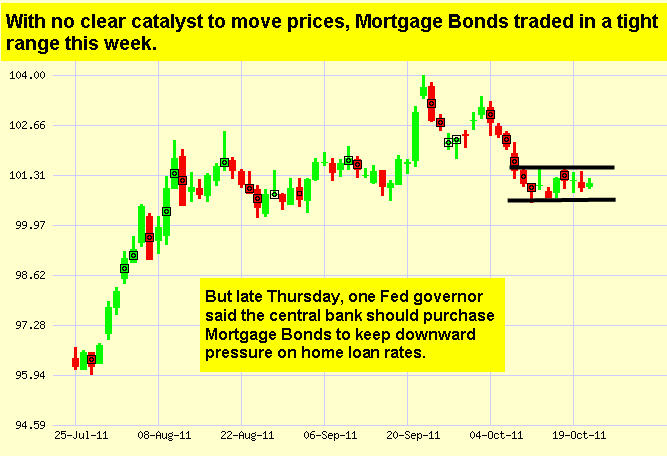| |
|
| |
| | In This Issue  |
| 
|
| | | | | | | Last Week in Review: Historic news out of Europe, plus Stocks make history. Forecast for the Week: The Fed meets, and Friday brings big Job news-will the numbers give the markets a scare? View: Changes are coming to the Home Affordable Refinance Program. Find out what this means for homeowners. |
| | Last Week in Review  |
| 
|
| | | | | | | Trick or treat? Last week, there was big news out of Europe, as an agreement was reached to help keep Greece from going into default. But will this deal mean a frightful time is ahead for Bonds and home loan rates? Read on for more details. 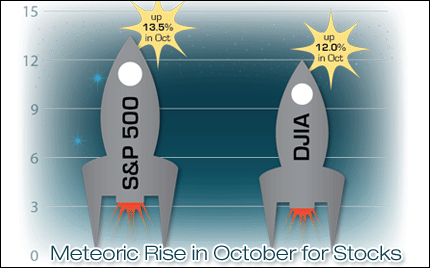 On Thursday, the world was cheering on the news that a deal in Europe was reached, with private banks and other holders of Greek debt accepting a 50% haircut on their principal investment. Once the write down takes place, Banks who are holding Greek debt will have to recapitalize themselves by year-end, and government support will be available to fill voids that private money won't fill. In addition, the Economic Financial Stability Facility (EFSF) rescue fund, which currently has $443 Billion in holdings, will be expanded and leveraged to $1 Trillion Euros or $1.4 Trillion US Dollars. On Thursday, the world was cheering on the news that a deal in Europe was reached, with private banks and other holders of Greek debt accepting a 50% haircut on their principal investment. Once the write down takes place, Banks who are holding Greek debt will have to recapitalize themselves by year-end, and government support will be available to fill voids that private money won't fill. In addition, the Economic Financial Stability Facility (EFSF) rescue fund, which currently has $443 Billion in holdings, will be expanded and leveraged to $1 Trillion Euros or $1.4 Trillion US Dollars. So the agreement is together…but like any effective plan, it now has to be put into action. And as this rolls out, the financial markets will be watching every step. When the sentiment is positive, like it was the day the plan was announced, Stock markets could benefit as investors would seek to take advantage of gains. In fact, the Stock markets are set to have their biggest monthly gains on record as October comes to an end. The closely watched S&P 500 Index is up 13.5% for the largest increase since October of 1974, while the Dow Jones advance of 12% is the biggest gain since January of 1987. Optimism surrounding the European crisis, positive economic data and better than expected earnings reports have fueled the rally. So what does all of this mean for Bonds and Phoenix home loan rates? The deal that was reached in Europe is historic, and good news for the world's economies overall. However, the plan has yet to be put into action-and then it has to work. And if there are hiccups or issues along the way, Bonds and home loan rates could benefit with some renewed safe haven trading. We saw a little of that late last week, when Friday's less than stellar Italian Bond auction reminded the world that the European debt crisis is not yet entirely resolved. The most important thing to keep in mind is that now remains a great time to purchase or refinance a home, as home loan rates are still near historic lows. Let me know if I can answer any questions at all for you or your clients. |
| | Forecast for the Week  |
| 
|
| | | | | | | Major economic data is set to impact trading behavior this week…with manufacturing and employment leading the way: - Manufacturing headlines will be in the spotlight this week with the Chicago PMI on Monday, followed by the ISM Index on Tuesday. Worker Productivity is also set for release on Thursday.
- The ADP Employment Report will be the first of two key releases to gauge the labor markets. Watch for ADP to be released on Wednesday.
- As usual, Weekly Jobless Claims will be delivered on Thursday. Last week's report showed that people filing for first-time benefits still remain above the 400,000 level.
- Friday's Jobs Report data will garner the most attention as the Labor Department reveals how many new jobs were created in October. Last month's gain of 103,000 new workers was positive.
In addition to the reports above, the Fed Meeting begins on Tuesday and ends Wednesday with the Fed's monetary policy statement. The housing markets will be scrutinizing that statement for any rhetoric that involves possible new purchases of Mortgage Backed Securities to keep home loan rates near record lows. Recently, several Fed members have stated that the Fed needs to support the housing markets and not to see elevated borrowing costs. Remember: Weak economic news normally causes money to flow out of Stocks and into Bonds, helping Bonds and home loan rates improve, while strong economic news normally has the opposite result. As you can see in the chart below, Bonds and home loan rates worsened in October as Stocks had one of their best months on record. But rates remain near historic levels, and I'll be watching closely to see what happens as we move into November. Chart: Fannie Mae 3.5% Mortgage Bond (Friday Oct 28, 2011) 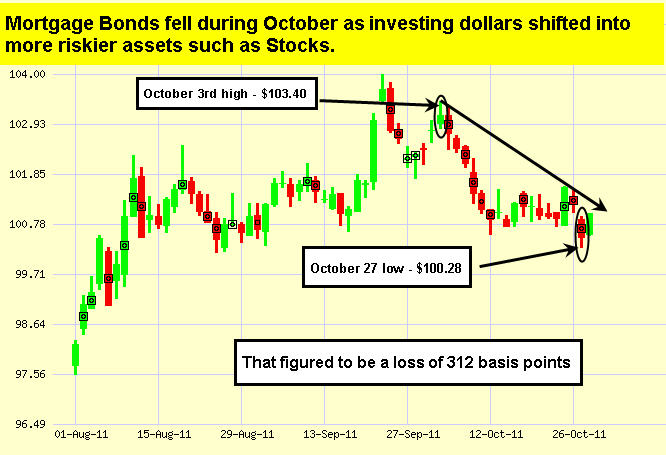
| | The Mortgage Market Guide View...  |
| 
|
| | | | | | | The President's New Plan for Homeowners ( HARP Refinance Program ) You may have heard that President Obama plans to open up refinancing to more homeowners who are underwater. If you've been hearing questions about this program or are just curious about what the plan involves, here are some of the major highlights: So, what is HARP ? What's Really New? First, it's important to realize that the president's proposal is not a new program, but a revision to the current Home Affordable Refinance Program (HARP). However there are some big changes that you can let people know if they ask you. Refinance…No Matter How Underwater Now homeowners can refinance no matter how underwater they are! Before homeowners could only refinance if they were 25% or less underwater, and even then many banks only let people who were 5% or less underwater refinance. No Appraisal Necessary? With the program's revision, it's possible that an appraisal won't have to be performed. That's great news because it can help people save time and money. But this is only the case if Fannie Mae or Freddie Mac can electronically estimate the value through their valuation models. But Keep in Mind… These updates to HARP apply only to people whose mortgage is currently secured by Fannie Mae or Freddie Mac...and whose loan was securitized by Fannie Mae or Freddie Mac prior to May 31, 2009. So the chances are that people who have refinanced since May 2009 will not qualify to refinance under the HARP rev | | | | | | |
Posted via email from philipjensen's posterous

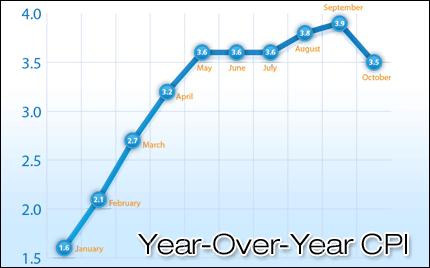
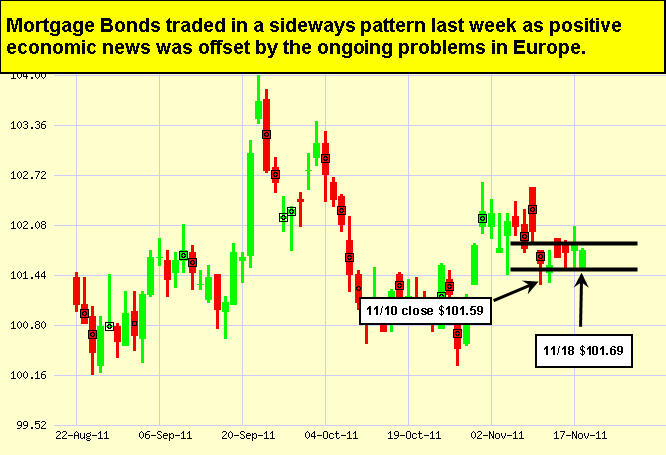


 In order to really have an impact on housing, the Fed would have to announce something significant to get people to buy a home. Why? Because even now, with rates at historically low levels and incredible affordability levels, the sales pace in housing is tepid, due to structural problems in the labor market, which the Fed can't fix.
In order to really have an impact on housing, the Fed would have to announce something significant to get people to buy a home. Why? Because even now, with rates at historically low levels and incredible affordability levels, the sales pace in housing is tepid, due to structural problems in the labor market, which the Fed can't fix. 